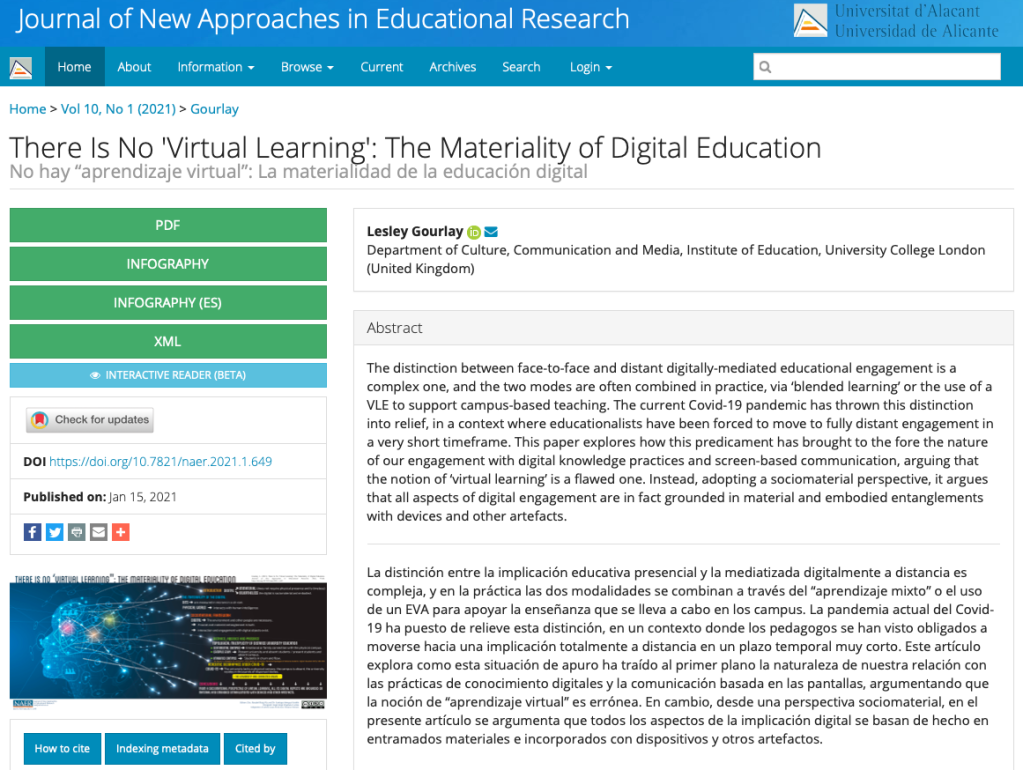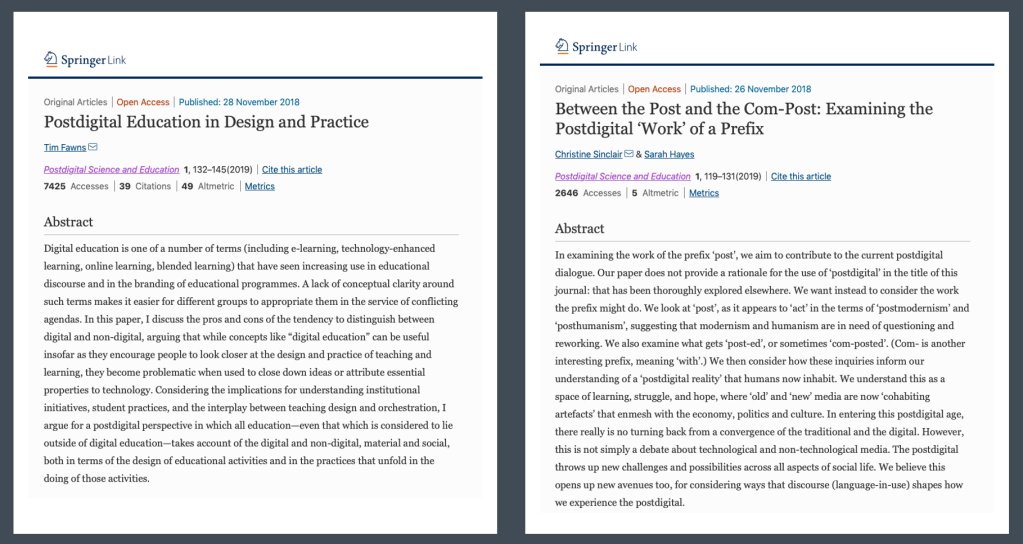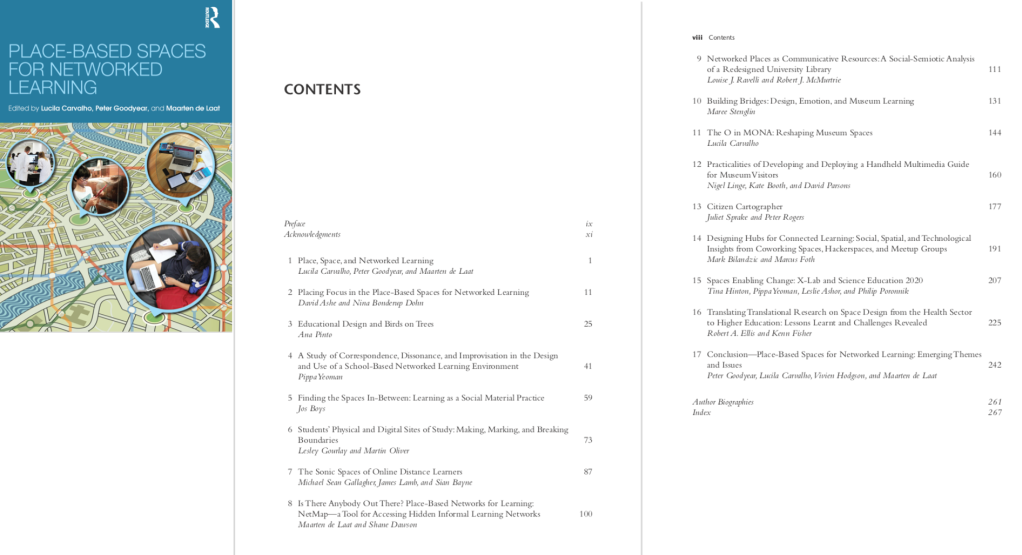After a year’s wrangling about ‘online vs face-to-face’, many people are coming round to the view that this is a false and unhelpful dichotomy. Learning doesn’t happen online. It happens where the learner is. The digital and material resources that come to hand while engaged in a learning activity can have subtle and powerful effects on how the activity unfolds, and on the learning that eventuates.
I’m using this brief post to point to some literature that helps with thinking about education and learning when the digital and material are seen as closely entangled, rather than in opposition.
The most recent paper I’d recommend is Lesley Gourlay’s article ‘There is no “virtual learning”: the materiality of digital education’. https://doi.org/10.7821/naer.2021.1.649

Some of the best recent writing about education that responds in a sophisticated way to the limitations of the ‘online vs face-to-face’ dichotomy can be found in the new(ish) journal Postdigital Science and Education.
In particular, I’d recommend two papers in PDSE by Tim Fawns and by Christine Sinclair and Sarah Hayes.
Fawns, T. (2019). Postdigital education in design and practice. Postdigital Science and Education, 1, 132-145. https://doi.org/10.1007/s42438-018-0021-8
Sinclair, C., & Hayes, S. (2019). Between the Post and the Com-Post: Examining the Postdigital ‘Work’ of a Prefix. Postdigital Science and Education, 1(1), 119-131. https://doi.org/10.1007/s42438-018-0017-4

The field of research and practice known as ‘Networked Learning’ is also a good source of ideas and experience, with many thoughtful accounts based on innovative teaching and careful investigation. We brought together a number of people who have been working on relations between digital tools and material places in a book edited by Lucila Carvalho, Maarten de Laat and myself in 2017.
Carvalho, L., Goodyear, P., & de Laat, M. (Eds.). (2017). Place-based spaces for networked learning. New York: Routledge.
The title of this blog post is taken from the introductory chapter to the PBSNL book.

Another recent article in PDSE provides a good way into this broader Networked Learning literature:
Networked Learning Editorial Collective. (2020). Networked Learning: Inviting Redefinition. Postdigital Science and Education, 3, 312-325. https://doi.org/10.1007/s42438-020-00167-8
Finally, there’s a recent special issue of BJET on ‘hybrid’ learning spaces, including a paper I wrote about how university teachers and others design for learning activities that spill across the material and digital.
Goodyear, P. (2020). Design and co-configuration for hybrid learning: Theorising the practices of learning space design British Journal of Educational Technology, 51(4), 1045–1060. https://doi.org/10.1111/bjet.12925
